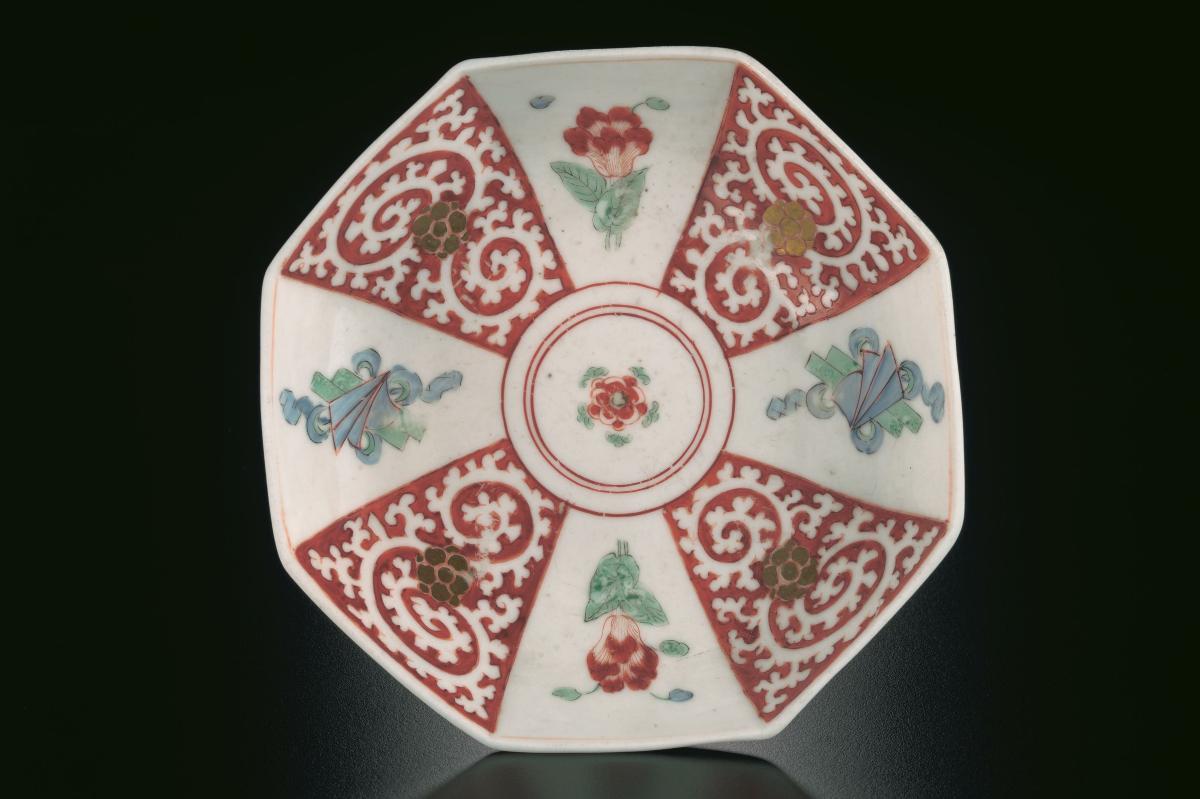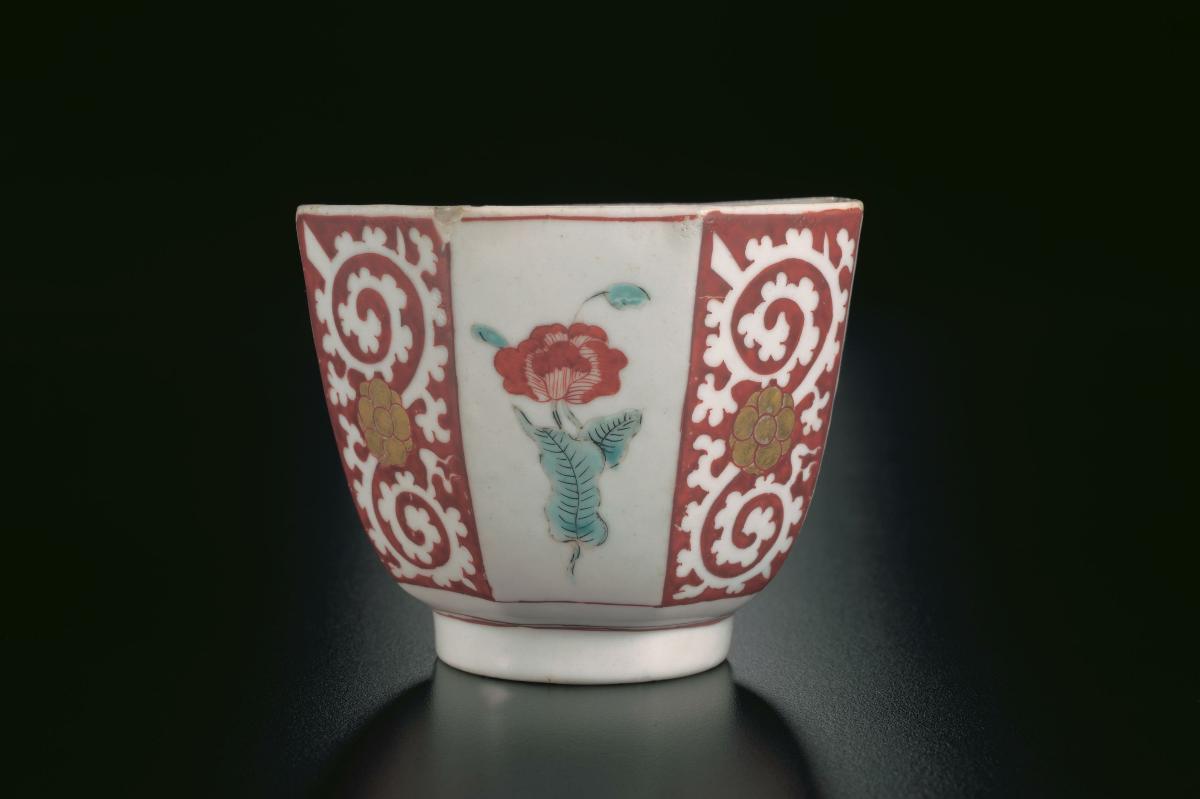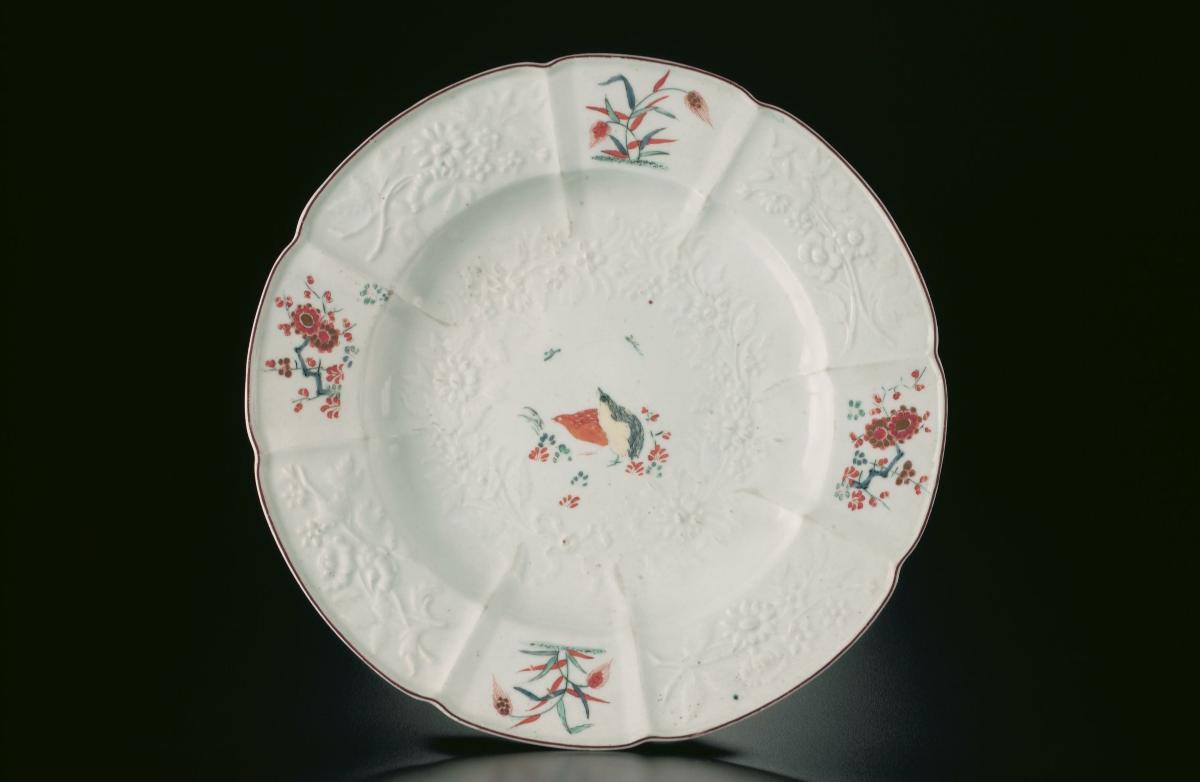This octagonal saucer is painted in the Kakiemon style. It features red panels with stylised scrolls alternating with motifs on a white ground. The motifs are a flower and what is probably the ‘two books’ – an auspicious symbol with its origin in Chinese art, where it was often part of a combination of eight precious objects signifying success, knowledge and happiness.The Kakiemon style had one of the greatest impacts on European ceramics. The colours and patterns of Kakiemon wares were reproduced and modified by European factories. Kakiemon porcelain was produced in the area of Arita in present-day Saga prefecture on Kyushu Island. Kakiemon is named after the potter, Sakaida Kakiemon (1596-1666), who was reputed to have pioneered the use of colour enamels on porcelain in Japan. The designs are finely painted in translucent overglaze enamels with large undecorated areas highlighting the distinctive milky-white body. The Chelsea factory, one of the earliest porcelain factories established in England, was in production by around 1745. Chelsea focused on producing fine table wares and decorative figures for the English elite.















